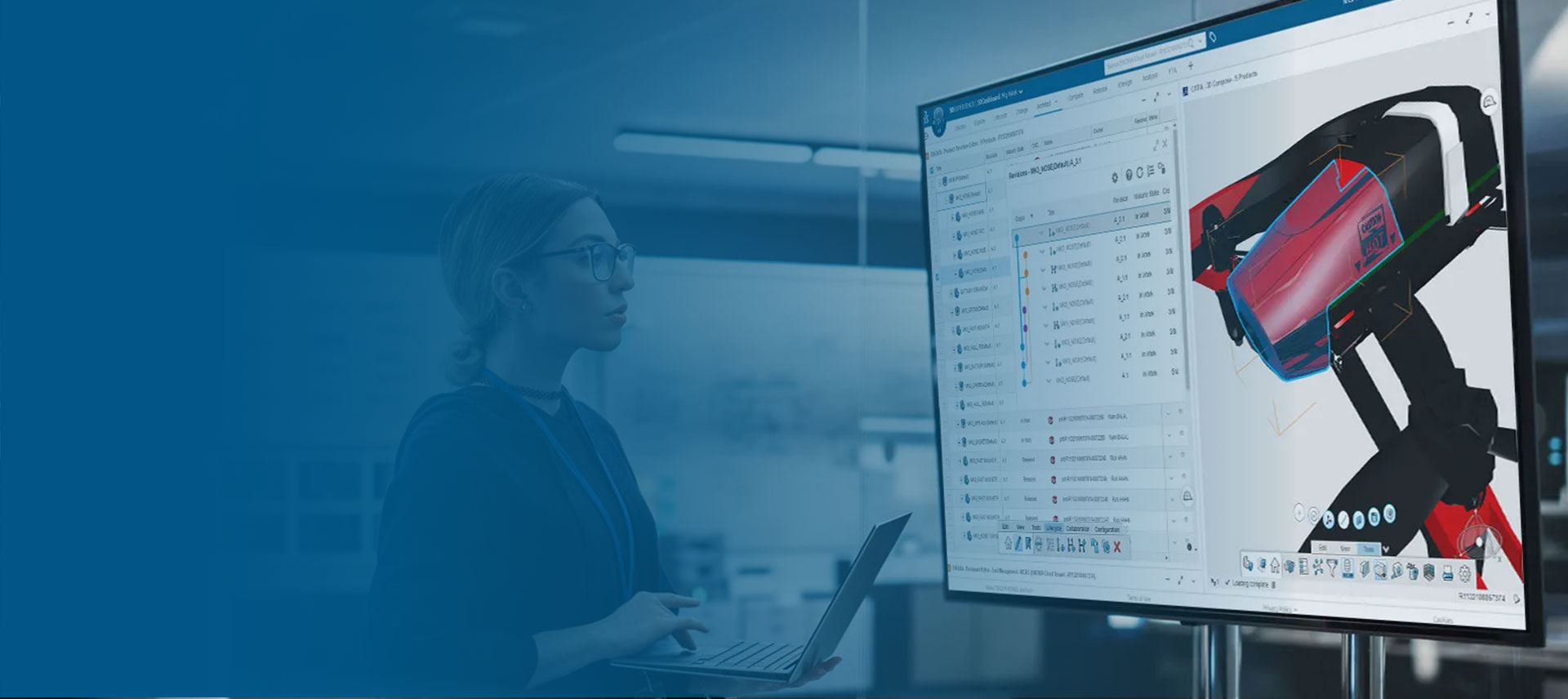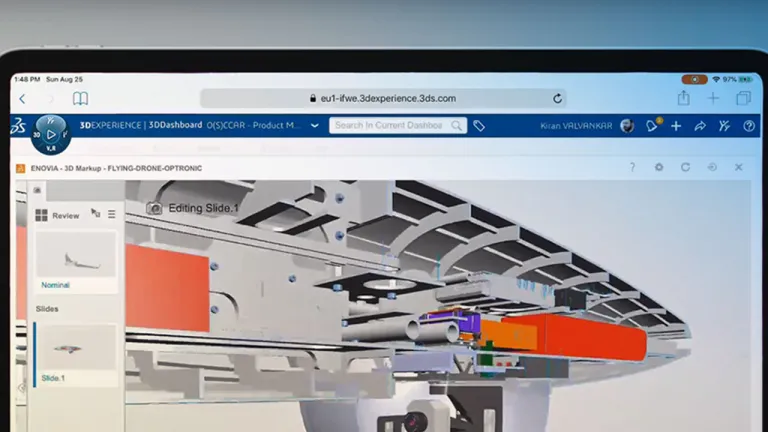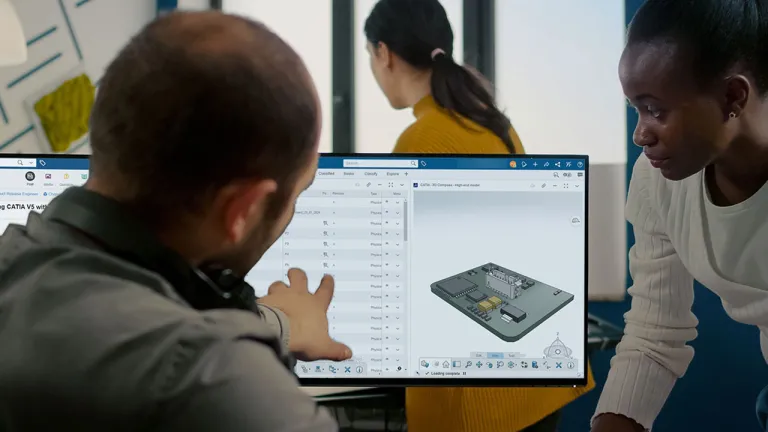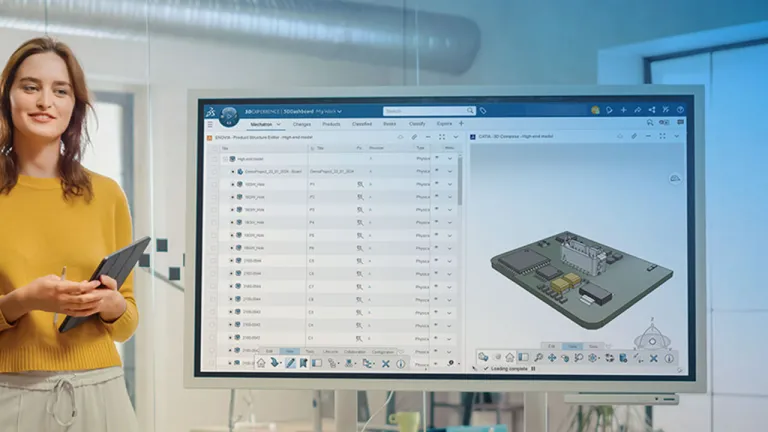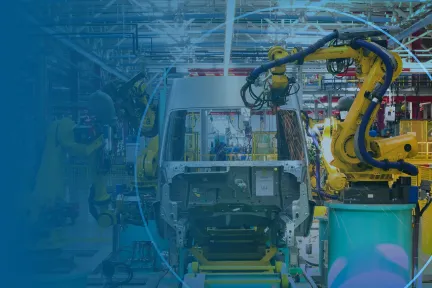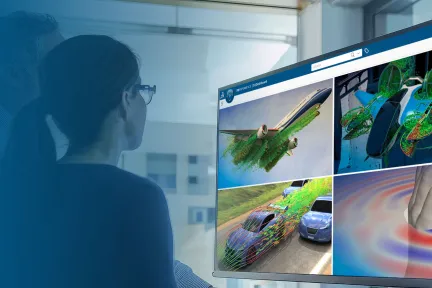Product Lifecycle Management: What is PLM software?
Streamline product development from design to end-of-life.
What Is PLM Software?
Product Lifecycle Management (PLM) software systems have long been a standard for how businesses optimize the development, quality and profitability of manufactured goods. PLM provides a comprehensive approach to managing information across a product's entire journey, from initial concept to final retirement.
A PLM solution encompasses all aspects of a product's life, including design, development, manufacturing, marketing, support and recycling. PLM software is essential for businesses because it standardizes processes and connects stakeholders around a shared product definition.
The History of Dassault Systèmes in PLM
- Origin and evolution
- Dassault Systèmes' role
- PLM vs PDM software
- PLM on the 3DEXPERIENCE platform
Origin and evolution
The concept of PLM originated in the 1980s within the aerospace and automotive industries. As products became increasingly complex, these industries required sophisticated systems to effectively manage the vast amounts of data generated throughout the product lifecycle.
The initial phase of PLM was marked by the development of Computer-Aided Design (CAD) tools and Product Data Management (PDM) systems. These tools enabled engineers to create detailed digital models and manage product-related information systematically.
Dassault Systèmes' role
The ENOVIA brand of Dassault Systèmes was founded in 1998 to develop the first 3D PLM system as a way to transform product innovation across the value network and through all stages of the product lifecycle.
With the launch of the 3DEXPERIENCE platform in 2012, Dassault Systèmes expanded the PLM offering to go beyond products and include the experiences they provide.
PLM vs PDM software
PDM and PLM are both software systems used in product development, but they serve different purposes:
- PDM: Focuses on managing product data (CAD) through the design and engineering phases of development.
- PLM: Expands on PDM functionality by governing all product information across all stages of the lifecycle from conception to disposal, including data, processes and collaboration.
PLM on the 3DEXPERIENCE platform
The 3DEXPERIENCE platform, goes beyond traditional PLM by integrating design, engineering, simulation and manufacturing data. Connecting people, ideas and data into a unified environment, enhances collaboration across the value network and transforms traditional processes.
With the model at the core of all business processes, the platform enables efficient model-based systems engineering (MBSE) across the enterprise. As a result, the platform drives significant improvements in time-to-market, quality and operational agility.
Key Benefits of Product Lifecycle Management Software
Faster time-to-market
PLM enables design, engineering and manufacturing teams to work more efficiently by centralizing data management and automating processes to help reduce the risk of errors and rework across all stages of product development.
Enhanced team collaboration
PLM systems give stakeholders real-time access to the latest information by centralizing product data such as designs, specifications and engineering documents. This fosters seamless cross-functional collaboration from early development stages, where design changes are most efficient and cost-effective.
Increased market opportunities
PLM allows for faster product development that meets shifting market demands and regional regulatory requirements by managing products and their variants’ data in a single location. This agility facilitates increased sales opportunities and improved customer satisfaction.
Reduced cost and waste
With clear visibility and governance over the product development process, PLM reduces waste, helping companies minimizing development costs and excess inventories.
Product Lifecycle Management and Sustainability
Enabling a generative economy and sustainable innovation through PLM.
Driving eco-friendly innovation
PLM is pivotal in driving sustainable practices and eco-friendly innovation across industries. By integrating sustainability considerations into every stage of the product lifecycle, PLM enables companies to reduce their environmental impact while improving efficiency.
Life Cycle Assessment (LCA) tools within PLM systems allow businesses to evaluate and optimize the environmental footprint of their products from cradle to grave.
This holistic approach helps identify opportunities for reducing resource consumption, minimizing waste and improving energy efficiency.
It will be possible to generate multiple lives of things — waste is becoming a resource for new products.
It’s the PLM of the 21st century: Dassault Systèmes invented Product Lifecycle Management in the 1990s and now we virtualize the multiple cycles of lives of things.
Product Lifecycle Management Across Industries
Discover how Product Lifecycle Management is applied in various industries and how our PLM solutions stand above the rest.
Driving Innovation with Dassault Systèmes’ PLM Solutions
Empowering innovation and efficiency, ENOVIA transforms business with the 3DEXPERIENCE platform’s scalable, cloud-based PLM solutions. This connected approach enhances collaboration, streamlines workflows and drives data-driven decisions to optimize operations and maintain a competitive edge.
Next-Gen PLM on ENOVIA
Innovation is essential, but balancing efficiency with rapid breakthroughs is challenging. ENOVIA PLM solutions transform operations, enabling scalability and accelerated innovation. Lead your industry's future with ENOVIA.
Cloud-Based PLM solutions
The 3DEXPERIENCE platform on the cloud offers scalable, flexible solutions accessible from anywhere. It enhances global collaboration, reduces IT costs and helps businesses quickly adapt to market changes.
One Platform, Endless Possibilities
The 3DEXPERIENCE platform unifies product lifecycle management, enabling real-time collaboration across teams. By breaking silos, it fosters efficiency, innovation and a single source of truth for all product data.
Experience the Real-World Value of PLM Solutions
Explore how companies of various sizes have benefited from implementing Product Lifecycle Management solutions.
Use Cases: Key Business Functions of PLM Software
Discover how PLM enhances key business functions — from quality assurance to cost management — by streamlining processes, improving collaboration and ensuring compliance across the product lifecycle.
BOM: bill of materials management
BOMs specify the components incorporated into a product. Effective BOM management serves as the cornerstone for evaluating and implementing changes within the product structure, thereby ensuring consistency, quality and regulatory compliance throughout its lifecycle.
Quality assurance & compliance
Successful product innovation requires strategic portfolio management. PLM allows companies to define, track and align product roadmaps with business goals. Dassault Systèmes’ solutions connect portfolio management with product development, ensuring projects stay on schedule and aligned with market needs.
Supply chain optimization
A complex global supply chain requires visibility and agility. PLM enables real-time supplier collaboration, allowing businesses to model sourcing scenarios, anticipate risks and align decisions with cost and sustainability goals. Dassault Systèmes’ solutions help optimize supply chain flows, reduce lead times and improve resilience.
Cost management & profitability
Managing costs from design to production is key to profitability. PLM integrates real-time cost tracking, helping teams anticipate financial impacts early. Dassault Systèmes’ solutions provide a unified view of expenses, enabling proactive adjustments and profitability optimization across the product lifecycle.
Multi-discipline design collaboration
Modern products require seamless collaboration between mechanical, electrical and software teams. Dassault Systèmes’ PLM solutions break down silos, providing a unified digital environment where engineers can work in parallel, ensuring data consistency and accelerating development cycles.
Product development & portfolio management
Successful product innovation requires strategic portfolio management. PLM allows companies to define, track and align product roadmaps with business goals. Dassault Systèmes’ solutions connect portfolio management with product development, ensuring projects stay on schedule and aligned with market needs.
Engineering data management & security
Managing and securing engineering data is essential for innovation. PLM centralizes design files, simulations and documentation, ensuring controlled access and regulatory compliance. Dassault Systèmes’ solutions offer data encryption, version tracking and collaboration tools, reducing risks and improving efficiency.
Virtual Twins: Expanding PLM Beyond Design and Engineering
A virtual twin represents a product or system as it exists now, but also how it was designed, tested and manufactured in the past and how it could be operated and maintained in the future.
Virtual Twin Experiences
Virtual twins are everywhere, for everything.
They model the full lifecycle, behavior, and evolution of a product, starting with a 3D representation of its shape and properties. They optimize design, materials and processes while ensuring traceability and supporting PLM throughout the lifecycle.
Virtual twins bridge the physical and digital!
In order to generate and protect the most valuable intellectual property, it is of critical importance to create virtual twin experiences of everything for everyone that harmonize product, nature and life.
Dassault Systèmes' Key Values in PLM
Innovation-driven solutions
Dassault Systèmes prioritizes cutting-edge technology to drive product innovation.
Sustainability focus
The 3DEXPERIENCE platform integrates eco-friendly practices throughout the product lifecycle.
Industry-specific expertise
Dassault Systèmes offers tailored PLM solutions for industry-specific needs.
End-to-end integration
The platform provides seamless, real-time connectivity for all stakeholders and across all product lifecycle stages.
Customer-centric approach
Dassault Systèmes focuses on meeting unique client needs and fostering long-term partnerships.
Anytime, anywhere availability
Break free from IT constraints and unify your business with real-time collaboration on a cloud-based platform.
Want to Go Further?
Explore the content below to learn more about Dassault Systèmes and Product Lifecycle Management.
Get in Touch with Our Experts
Fill in the form to have a Dassault Systèmes expert contact you to answer your questions and discuss any of your needs.
Let’s transform your PLM journey together — contact us today!
